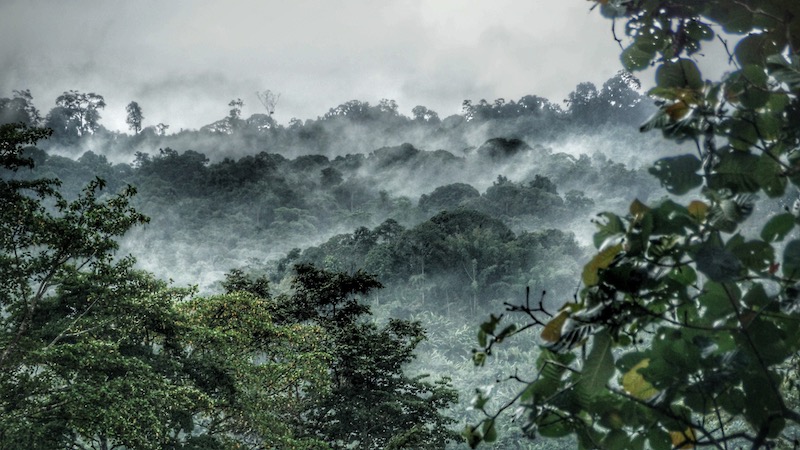Both Arthur Brooks and Robert Sirico released books this year arguing the moral case for free enterprise. Both books also mention the stark difference that 65 years of free enterprise has made between North and South Korea.
There is nothing more valuable to a sociologist than a pair of identical twins separated at birth. This isolates as best as possible the variable in question—the environment in which they mature. For the same reason, North and South Korea offer a valuable case study for political scientists and economists. Take a nation, split it into two parts, roughly equal in size, population, culture, GDP and nearly every other variable, but have one take the route of political and economic freedom, while the other pursues the promises of communism. It is the closest thing to a laboratory experiment in the natural world.
 Source: USAID
In 1948, early movements of the Cold War between the U.S. and Soviet Union led to a splitting of Korea into two separate nations—the North following the Soviets, the South following the United States. Real democratic reforms took decades to unravel, but a general pro-trade environment made a substantive difference in the development of South Korea.
For the first 25 years after the split, both North and South Korea roughly quadrupled their respective GDPs. But after 1975, North Korea’s economy flat-lined for 25 years, then sank back to its 1969 levels. South Korea’s economy, however, continued to escalate dramatically. In 2008, South Korea reached a GDP of nearly $1 trillion, compared to North Korea’s $25 million.
As Arthur Brooks observes in The Road to Freedom:
Source: USAID
In 1948, early movements of the Cold War between the U.S. and Soviet Union led to a splitting of Korea into two separate nations—the North following the Soviets, the South following the United States. Real democratic reforms took decades to unravel, but a general pro-trade environment made a substantive difference in the development of South Korea.
For the first 25 years after the split, both North and South Korea roughly quadrupled their respective GDPs. But after 1975, North Korea’s economy flat-lined for 25 years, then sank back to its 1969 levels. South Korea’s economy, however, continued to escalate dramatically. In 2008, South Korea reached a GDP of nearly $1 trillion, compared to North Korea’s $25 million.
As Arthur Brooks observes in The Road to Freedom:
 Source: USAID
In 1948, early movements of the Cold War between the U.S. and Soviet Union led to a splitting of Korea into two separate nations—the North following the Soviets, the South following the United States. Real democratic reforms took decades to unravel, but a general pro-trade environment made a substantive difference in the development of South Korea.
For the first 25 years after the split, both North and South Korea roughly quadrupled their respective GDPs. But after 1975, North Korea’s economy flat-lined for 25 years, then sank back to its 1969 levels. South Korea’s economy, however, continued to escalate dramatically. In 2008, South Korea reached a GDP of nearly $1 trillion, compared to North Korea’s $25 million.
As Arthur Brooks observes in The Road to Freedom:
Source: USAID
In 1948, early movements of the Cold War between the U.S. and Soviet Union led to a splitting of Korea into two separate nations—the North following the Soviets, the South following the United States. Real democratic reforms took decades to unravel, but a general pro-trade environment made a substantive difference in the development of South Korea.
For the first 25 years after the split, both North and South Korea roughly quadrupled their respective GDPs. But after 1975, North Korea’s economy flat-lined for 25 years, then sank back to its 1969 levels. South Korea’s economy, however, continued to escalate dramatically. In 2008, South Korea reached a GDP of nearly $1 trillion, compared to North Korea’s $25 million.
As Arthur Brooks observes in The Road to Freedom:
Many socialists in the West believed that the North’s Stalinist system of central planning would prove more effective than the South’s market-based approach. We all know how things turned out on the Korean peninsula. Today, North Korea is horribly poor and its people are starving. It also has the distinction of being the least free country in the world. Meanwhile, South Korea is both the thirty-seventh freest country in the world and the thirteenth richest.Brooks draws attention to the very reason we should be concerned about this. When you look at the satellite image of the peninsula at night, you can distinctly make out the border dividing the two countries. The South is lit up from shore to shore, but the North is blotted out, save for the capital, Pyongyang. Those lights represent more than electricity. They represent food, medical care, communications, industry, education, life expectancy and overall human flourishing. North Korea, in other words, is stuck in the middle ages. One might argue that this is just one case, and there could be other explanations for the difference. But we find the same phenomenon in Berlin, Germany. From 1961 to 1989, the Berlin Wall separated the pro-American western half of the city from the pro-Soviet eastern half. Though the wall was constructed to keep out the “fascist” West, attempts to breach it came only from those trying to escape the increasing hopelessness of the East. Guards had permission to shoot anyone making such an attempt. Over the 28 years, West Germany saw an improved economy and increased quality of life, while East Germany reversed course. On the campus of Rice University, just outside of the James A. Baker Institute for Public Policy, there is a portion of the original wall. It stands as a memorial to the collapse of the Soviet Union during Mr. Baker’s tenure as Secretary of State. Looking up at this wall a couple of years ago, I noticed something interesting: One side is full of graffiti, but the other side is undisturbed. It occurred to me that the people on the West side of the wall had the prosperity and freedom to express their ideas in word and art. I tried to find photos of the wall from the East side, but these are apparently extremely rare, and show no evidence of such expression. These patterns of wealth and poverty are found in any comparison between a free economy and a non-free economy. It is no coincidence. Many critics of free enterprise argue that it leads to economic inequality. They divide nations in the name of protecting equality. And they are right. In a merit-based society, people will be rewarded on the basis of their unequal work, talent, ability and other factors. But the choice here is not between a world of prosperity for some and one of prosperity for all, as we are led to believe—that is an easy choice for anyone. We are faced with a more complex proposition: We must choose between unequal prosperity and shared poverty. When even the poorest among us live better than most of human civilization, the choice seems clear.



